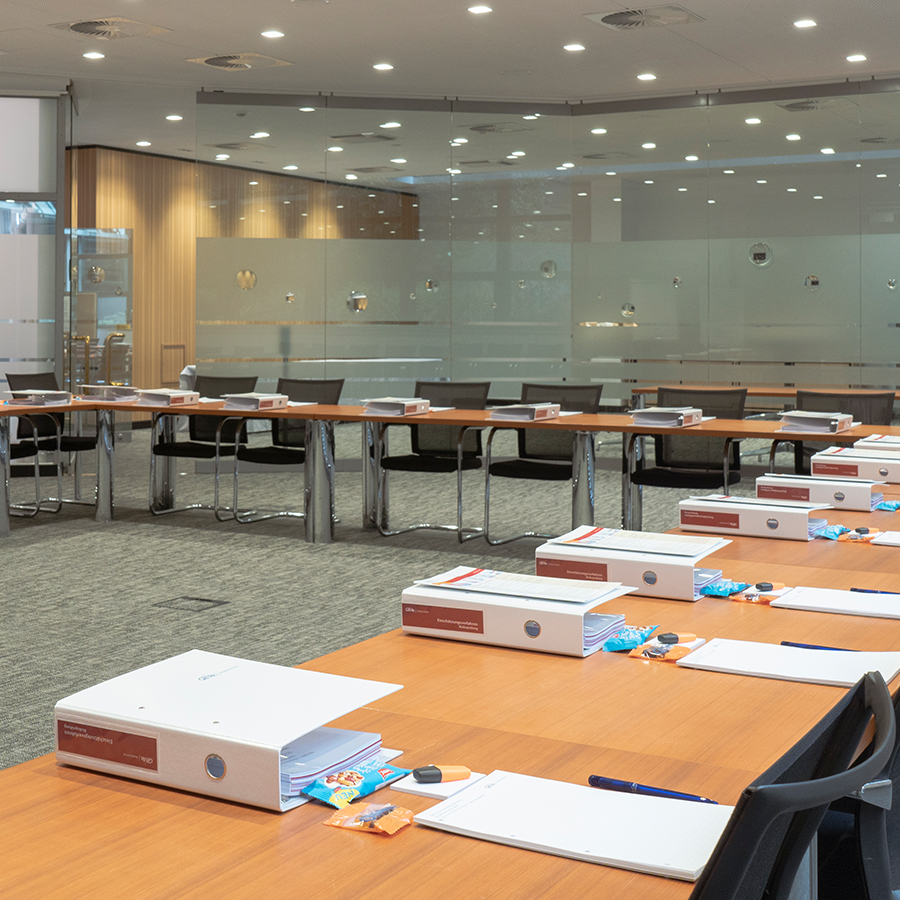-
Property & Casualty
Property & Casualty Overview

Property & Casualty
We offer a full range of reinsurance products and the expertise of our talented reinsurance team.
Trending Topics
Publication
Recycling of Large Lithium-Ion Batteries From a Property Insurance Perspective
Publication
Looks Like Inflation Is Sticking Around. What Do We Do Now? [Part 3 of 3]
Publication
The Future of Cryptography and the Rise of Quantum Computing
Publication
Personal Injury Compensation in Europe: An Updated Comparison Among Different Systems Within the European Market
Publication
How to Plan for Cat Claims - Before, During, and After an Event -
Life & Health
Life & Health Overview

Life & Health
We offer a full range of reinsurance products and the expertise of our talented reinsurance team.
Training & Education
Publication
The Future Impacts on Mortality [Video]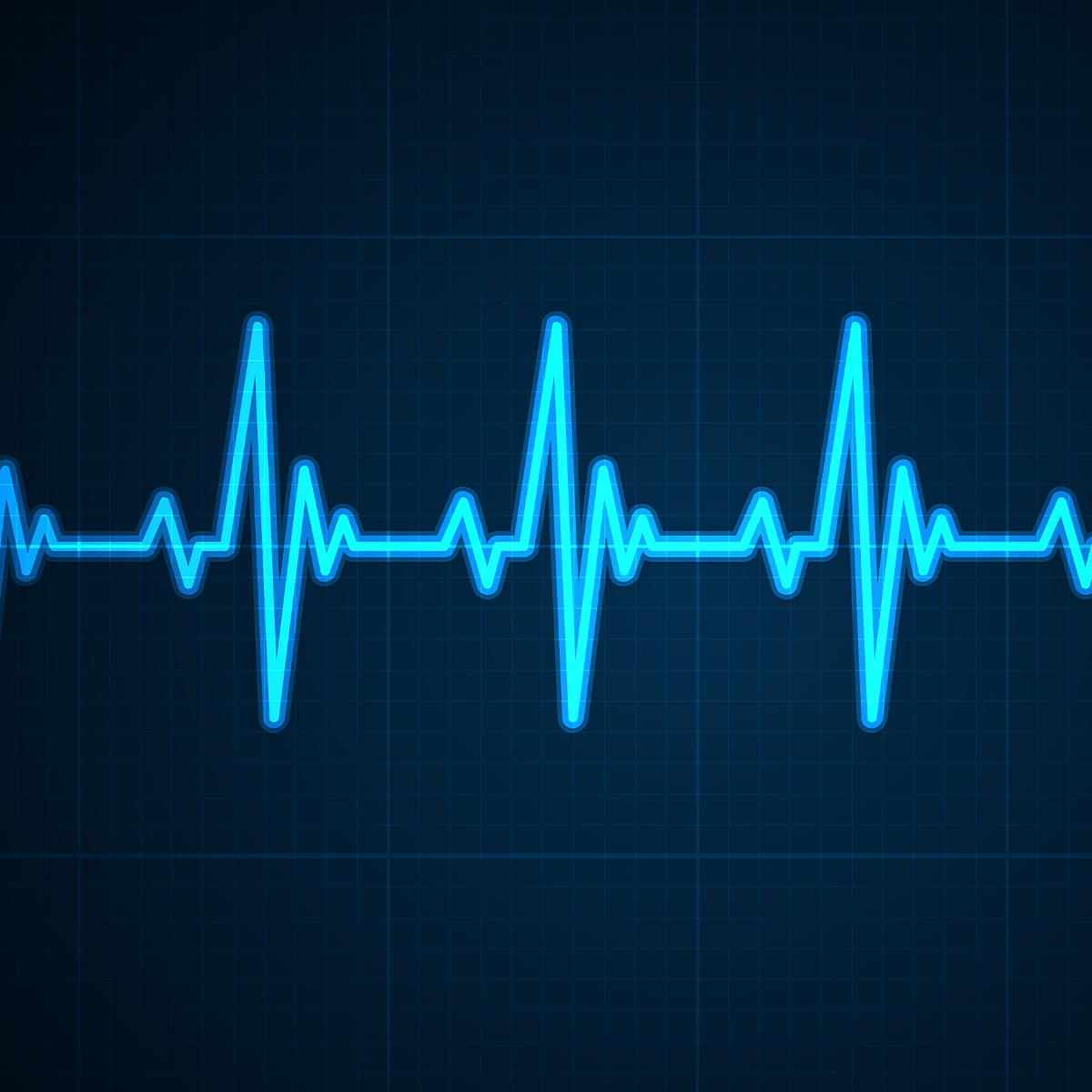
Publication
Beware of Demo Mode on Electrocardiogram Reports
Publication
Understanding Breast Cancer in Asia – Awareness and the Importance of Screening
Publication
Marginal Gains in the Medicare Supplement Market U.S. Industry Events
U.S. Industry Events Moving The Dial On Mental Health
Moving The Dial On Mental Health -
Knowledge Center
Knowledge Center Overview

Knowledge Center
Our global experts share their insights on insurance industry topics.
Trending Topics -
About Us
About Us OverviewCorporate Information

Meet Gen Re
Gen Re delivers reinsurance solutions to the Life & Health and Property & Casualty insurance industries.
- Careers Careers
Understanding Breast Cancer in Asia – Awareness and the Importance of Screening

October 19, 2023
Wendy Low
,
Pei Nee Yong
,
Samuel Lim
Region: Asia
English
As October paints the world in shades of pink, we come together for Breast Cancer Awareness Month. It’s a time to remember those who have faced this challenge, celebrate the strength of survivors, and strive for better awareness about the early prevention of breast cancer. Most importantly, it’s a time for us to understand and learn more about this life-threatening condition.
Why Talk about Breast Cancer?
Breast cancer ranks as the most prevalent cancer worldwide, constituting around one-third of all new female cancers in developed countries. In 2020, the World Health Organisation (WHO) reported a staggering 2.3 million women diagnosed with breast cancer globally, and breast cancer claimed the lives of 685,000 individuals.1 Beyond the harrowing mortality figures, breast cancer inflicts immeasurable physical and emotional anguish upon patients and their loved ones.
The Importance of Early Detection & Prevention
In general, the exact causes of breast cancer are unknown. A combination of genetic, environmental, and lifestyle factors are commonly said to contribute to its development. Lifestyle factors that increase one’s risk of breast cancer include obesity, excessive alcohol consumption, reproductive history, smoking, and postmenopausal hormones. However, it is important to note that nearly half of all breast cancer cases globally occur in women without any specific risk factors, aside from their gender and age.2 Therefore, no women are immune to the potential development of breast cancer. Thus, managing lifestyle risk factors alone cannot suffice and the most prudent course of action is to adhere to recommended screening protocols.
Early detection plays a pivotal role in improving breast cancer survival rates. According to statistics from the Singapore Cancer Registry 2017, the five-year survival rate for breast cancer in Singapore increases from 24.6% to a remarkable 90.7% when detected at stage I rather than stage IV.3 The primary methods for early detection of breast cancer are mammography and Breast Self-Examination (BSE). Different guidelines have been established across various regions globally, with one of the most common recommendations being monthly BSE for all women aged 20 and above.
Looking into breast cancer in Gen Re’s most recent Dread Disease Survey 2015–2019 (DD Survey) which studies critical illness, it can be seen that the average age for breast cancer claims is 48 years in both Hong Kong and Malaysia markets and 50 years in the Singapore market. Mammograms are typically recommended for most women between 40‑74 years of age, with a specific optimal age group for screening being those between 50‑69.4 Many countries offer subsidies or public screening services for mammograms, making them accessible at an affordable cost. WHO’s World Health Statistics 2023 report further highlights that a significant proportion of countries, approximately 59% worldwide, have implemented early detection programs for breast cancer.5 For instance, a typical Singaporean aged 50 and above can access mammogram screening for a mere SGD 50 (USD 37) every two years.6 The National Cancer Society Malaysia (NCSM) also offers free mammogram screening services for all women above the age of 40 in September and October this year, in conjunction with Breast Cancer Awareness Month.7
Insurance and Breast Cancer Coverage
The 10‑year incidence rate for breast cancer is on the rise in the Hong Kong, Malaysia, and Singapore markets, each at varying degrees of deterioration, as indicated by the DD Survey. The figure below illustrates the trend in Age-Standardised Incidence Rate (ASIR) for females in all three markets from 2009 to 2019.
ASIR of female breast cancer
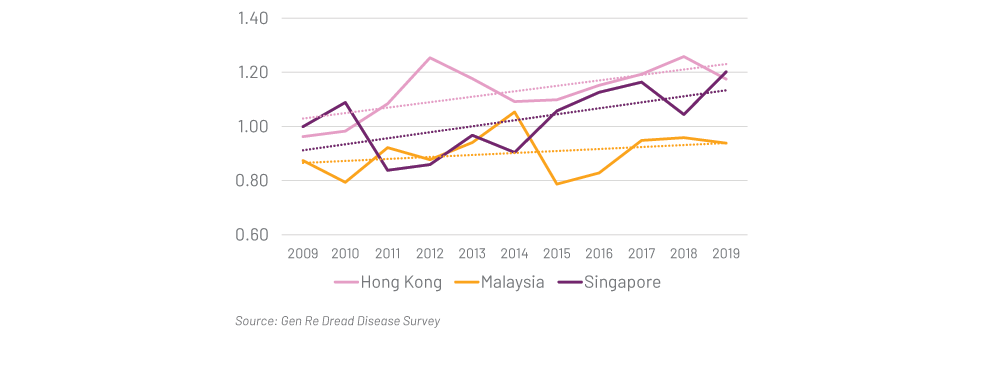
Fortunately, proactive efforts in breast cancer screening have shown a clear correlation to the improvement in late-stage (stage III and IV) breast cancer diagnoses and breast cancer mortality. This is illustrated in the comparison between population results and DD Survey results in the table and figure below.
Relationship between mammogram screening and late-stage breast cancer8
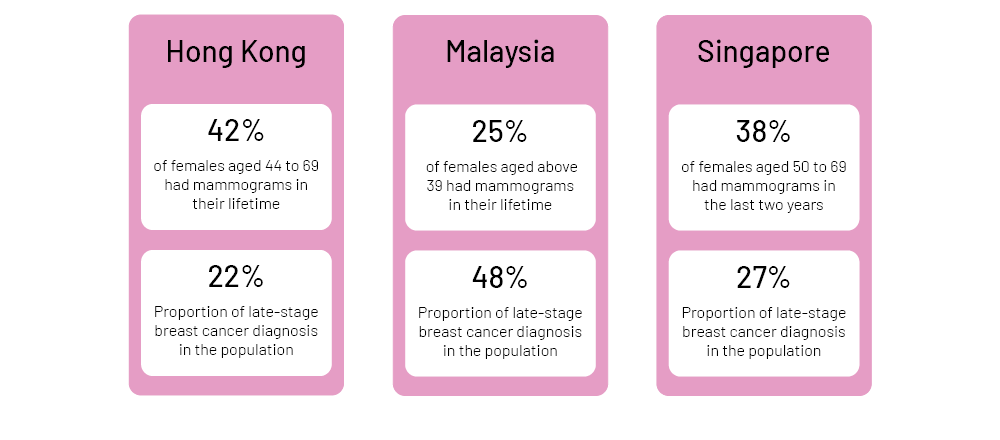
Proportion of death in female breast cancer claims
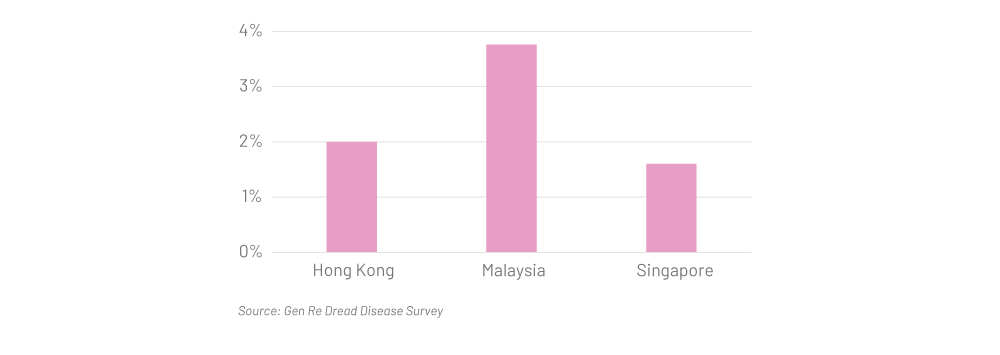
It is evident that an elevated mammogram screening rate is associated with a reduced incidence of late-stage diagnoses of female breast cancer, as evidenced by the data from the Hong Kong and Singapore markets shown above. Furthermore, this trend aligns with a diminished proportion of reported death claims in the results of DD Survey concerning breast cancer. Conversely, in the case of Malaysia, a comparatively lower mammogram screening rate is correlated with a substantially higher proportion of late-stage breast cancer diagnoses and death claims reported.
While the prospects of survival in the battle against breast cancer are improving, the financial burden it places on patients and their families remains undeniably significant. A breast cancer diagnosis entails not only the costs associated with treatment, but also the efforts needed to maintain a comfortable lifestyle during the fight against this formidable adversary. According to breastcancer.org, the indirect costs of breast cancer encompass:9
- Lost wages due to time off from work for the patient and/or their partner
- Transportation expenses to and from treatment centers
- Childcare arrangements for those responsible for children or grandchildren
- Household assistance, such as nursing care or housekeeping services
These are precisely the kinds of expenses that Critical Illness benefits aim to address. In the Hong Kong, Malaysia, and Singapore markets, the average protection for breast cancer stands at approximately USD 113,000, USD 16,000, and USD 95,000, respectively, as found in DD Survey. These payouts would help provide financial support to the insured for both the direct cost of treatment and the indirect, out-of-pocket expenses such as those outlined above.
What Steps Should You Take Today?
We must educate ourselves about the signs and symptoms of breast cancer. Insights on breast cancer can be found across the internet, with several organisations such as the WHO also providing valuable information. However, it is worthwhile noting that in the early stages of cancer, most individuals may not exhibit any symptoms, underscoring the importance of embracing recommended screening practices. To further fortify our preparedness in the face of breast cancer, one can also attend breast cancer-related talks and read expert-written publications about breast cancer.
However, breast cancer can strike anyone. It is, therefore, advisable to have sufficient insurance coverage to address both direct and indirect costs associated with breast cancer diagnosis. Several insurers have started to provide features such as premium waivers, cancer treatment support benefits, and post-cancer coverage to help better serve the needs of a cancer patient should an unfortunate event happen. Should any of the readers wish to enhance their products to prepare for a more supported cancer journey, please approach your Gen Re local representative.
Lastly, let us not forget our individual roles in raising awareness among our family, friends, and loved ones to safeguard their well-being. We can actively support local authorities' initiatives aimed at combating breast cancer, particularly during campaigns held throughout this awareness month.
- WHO, https://www.who.int/news-room/fact-sheets/detail/breast-cancer
- Ibid.
- Ministry of Health, Singapore, 50 Years of Cancer Registration, https://www.nrdo.gov.sg/docs/librariesprovider3/default-document-library/thespore-cancerregistry_commerativebook_-1.pdf?sfvrsn=231fce6e_0
- National Library of Medicine, https://www.ncbi.nlm.nih.gov/pmc/articles/PMC9142711/
- WHO, https://www.who.int/publications/i/item/9789240074323
- Singapore Cancer Society, https://www.singaporecancersociety.org.sg/learn-about-cancer/types-of-cancer/breast-cancer.html#early-detection
- National Cancer Society Malaysia, https://cancer.org.my/
- Screening rate Citation:
Hong Kong Breast Cancer Screening: The Government of the Hong Kong Special Administrative Region, the People’s Republic of China, Report of Population Health Survey 2020‑21 (Part I), https://www.chp.gov.hk/files/pdf/dh_phs_2020-22_part_1_report_eng_rectified.pdf
Malaysia Breast Cancer Screening: National Institutes of Health (NIH) Ministry of Health Malaysia, National Health and Morbidity Survey 2019, https://iku.moh.gov.my/images/IKU/Document/REPORT/NHMS2019/Report_NHMS2019-NCD_v2.pdf
Singapore Breast Cancer Screening: Epidemiology & Disease Control Division, Ministry of Health, Republic of Singapore, National Population Health Survey 2020, https://www.moh.gov.sg/docs/librariesprovider5/default-document-library/nphs-2020-survey-report.pdf
Late-stage Diagnosis Citation:
Hong Kong: Hong Kong Cancer Registry, https://www3.ha.org.hk/cancereg/default.asp
Malaysia: National Cancer Registry Department, Institut Kanser Negara, Summary of Malaysia National Cancer Registry Report 2012‑2016, https://www.moh.gov.my/moh/resources/Penerbitan/Laporan/Umum/2012-2016%20(MNCRR)/Summary_MNCR_2012-2016_-_06112020.pdf
Singapore: Ministry of Health, Singapore, 50 Years of Cancer Registration, https://www.nrdo.gov.sg/docs/librariesprovider3/default-document-library/thespore-cancerregistry_commerativebook_-1.pdf?sfvrsn=231fce6e_0 - Breastcancer.org, https://www.breastcancer.org/managing-life/covering-cost-of-care
All endnotes last accessed on 9 October 2023.





